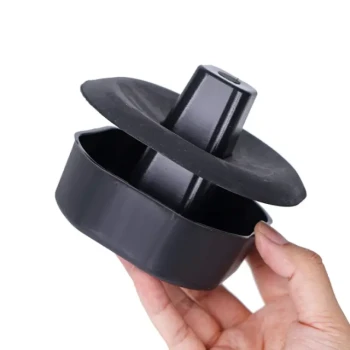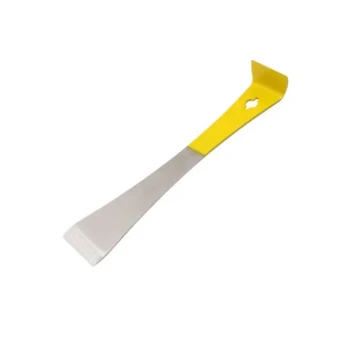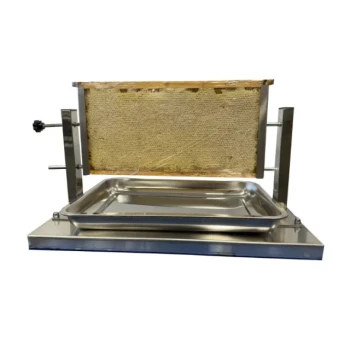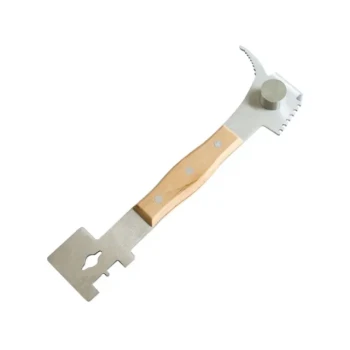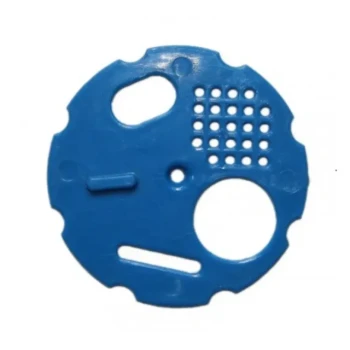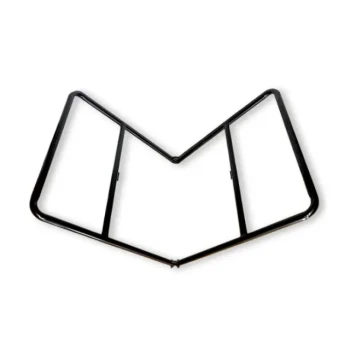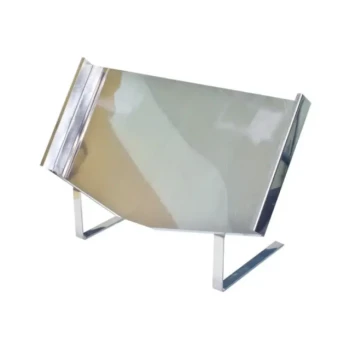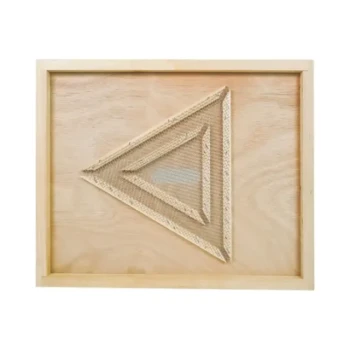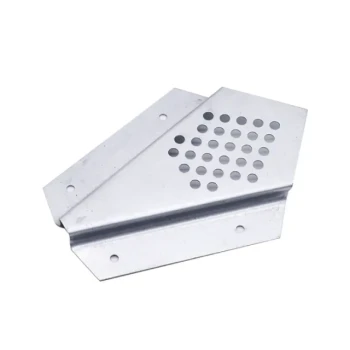While many materials can be used, a purpose-built metal hive stand is arguably the best base for a modern beehive. It provides exceptional durability against weather, complete immunity to rot and termites, and a slim profile that minimizes hiding spots for pests. These stands elevate the hive to a comfortable working height and ensure critical airflow, making them a superior long-term investment for the health of your colony and the ease of your work.
The "best" base is not defined by a single material, but by its ability to achieve three critical goals: elevating the hive off the ground, ensuring unwavering stability, and promoting essential ventilation for colony health.
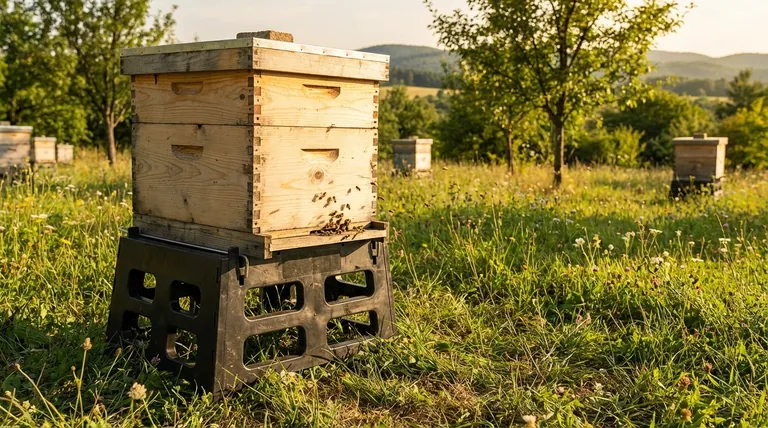
The Core Functions of a Hive Base
Before comparing materials, it's crucial to understand what a hive base or stand is meant to accomplish. Its role is foundational to the success and health of the colony.
Elevation is Your First Line of Defense
A primary function of a hive stand is to get the hive off the damp ground. This separation prevents moisture from wicking into the wooden bottom board, which dramatically reduces the risk of rot and extends the life of your equipment.
Elevation also serves as a powerful pest deterrent. It creates a significant barrier for ground-crawling pests and makes the hive a less attractive target for predators like skunks, who prefer to attack hives at ground level.
Promoting Crucial Airflow
Raising a hive improves air circulation beneath the bottom board. This ventilation is vital for managing moisture inside the hive, especially during humid summers and cold, damp winters.
Proper airflow helps prevent the buildup of condensation, which can lead to mold, mildew, and stress on the colony. A dry hive is a healthy hive.
Ensuring Stability and Safety
A beehive is incredibly heavy and top-heavy when full of honey. The base must provide a completely stable, level platform that will not rock, shift, or tip over in high winds or if accidentally bumped.
An unstable hive is a danger to the beekeeper, bystanders, and the bees themselves.
Improving Beekeeper Ergonomics
Working a hive on the ground requires constant bending and lifting, which can quickly lead to back strain. Elevating the hive to waist height makes inspections and manipulations far more comfortable and sustainable.
Evaluating Common Hive Base Materials
Different materials achieve the core functions of a hive base with varying degrees of success and longevity.
Metal Stands (The Durable Choice)
Metal stands, often made from steel, are an excellent choice for longevity. As noted in beekeeping literature, they can be built from widely available scrap metal like old bed frames.
They are immune to rot and termites, can last a lifetime, and their thin legs offer minimal hiding places for pests like small hive beetles or ants. While they may have a higher initial cost unless self-built, their durability makes them a sound investment.
Wooden Stands (The Traditional Option)
Wood is a classic, traditional material for hive stands, and they are easy to construct for any DIY-minded beekeeper. They are functional and blend in well with a natural environment.
However, any wood in contact with or close to the ground is susceptible to moisture, rot, and termites. They require periodic maintenance, painting, and will eventually need to be replaced.
Cinder Blocks (The Simple & Stable Solution)
Cinder blocks are a very common, inexpensive, and incredibly stable solution for a hive base. Two blocks set on level ground provide a quick and sturdy platform.
The primary drawback is that the hollow cores of the blocks can become ideal homes for ants, wasps, and other pests. If you use cinder blocks, it is wise to fill the holes with gravel or screen them off.
Understanding the Trade-offs
Choosing a base involves balancing cost, durability, and maintenance. There is no single perfect answer, only the best choice for your specific goals and environment.
Durability vs. Cost
Metal is the clear winner for durability but may have the highest upfront cost unless you use scrap materials. Cinder blocks are the cheapest option but can create pest issues. Wood sits in the middle, offering a moderate lifespan for a moderate cost.
Pest Management
A stand's design directly impacts pest control. Metal's slim profile is superior for minimizing pest harborage. The holes in cinder blocks are a significant drawback, and wood can attract termites or carpenter ants over time.
Portability and Placement
If you plan to move your hives, weight and convenience matter. Welded metal stands are relatively lightweight and easy to move. Cinder blocks are heavy and cumbersome. Wooden stands fall somewhere in between.
Making the Right Choice for Your Apiary
Your choice of hive base should be a deliberate decision based on your priorities as a beekeeper.
- If your primary focus is maximum longevity and pest resistance: A purpose-built metal hive stand is the superior long-term investment.
- If your primary focus is low initial cost and simple setup: Cinder blocks provide a stable, no-fuss solution, but be prepared to manage the pest harborage they create.
- If your primary focus is a traditional aesthetic or DIY construction: A well-built wooden stand is effective, but you must plan for eventual maintenance and replacement.
Ultimately, elevating your hive with a stable and durable base is one of the most important first steps in responsible and successful beekeeping.
Summary Table:
| Material | Best For | Key Advantages | Key Drawbacks |
|---|---|---|---|
| Metal Stand | Longevity & Pest Resistance | Immune to rot/termites; durable; minimal pest hiding spots | Higher initial cost (unless DIY) |
| Wooden Stand | Traditional Aesthetic & DIY | Easy to build; natural look | Susceptible to rot/termites; requires maintenance |
| Cinder Blocks | Low Cost & Stability | Inexpensive; very stable | Hollow cores attract pests (ants, wasps) |
Protect your investment and ensure your colony's health with the right foundation.
At HONESTBEE, we supply commercial apiaries and beekeeping equipment distributors with durable, wholesale-focused beekeeping supplies. A sturdy hive stand is a critical first step in successful apiary management.
Let us help you build a stronger, more productive operation. Contact our experts today to discuss durable hive stand options and wholesale pricing for your commercial needs.
Visual Guide
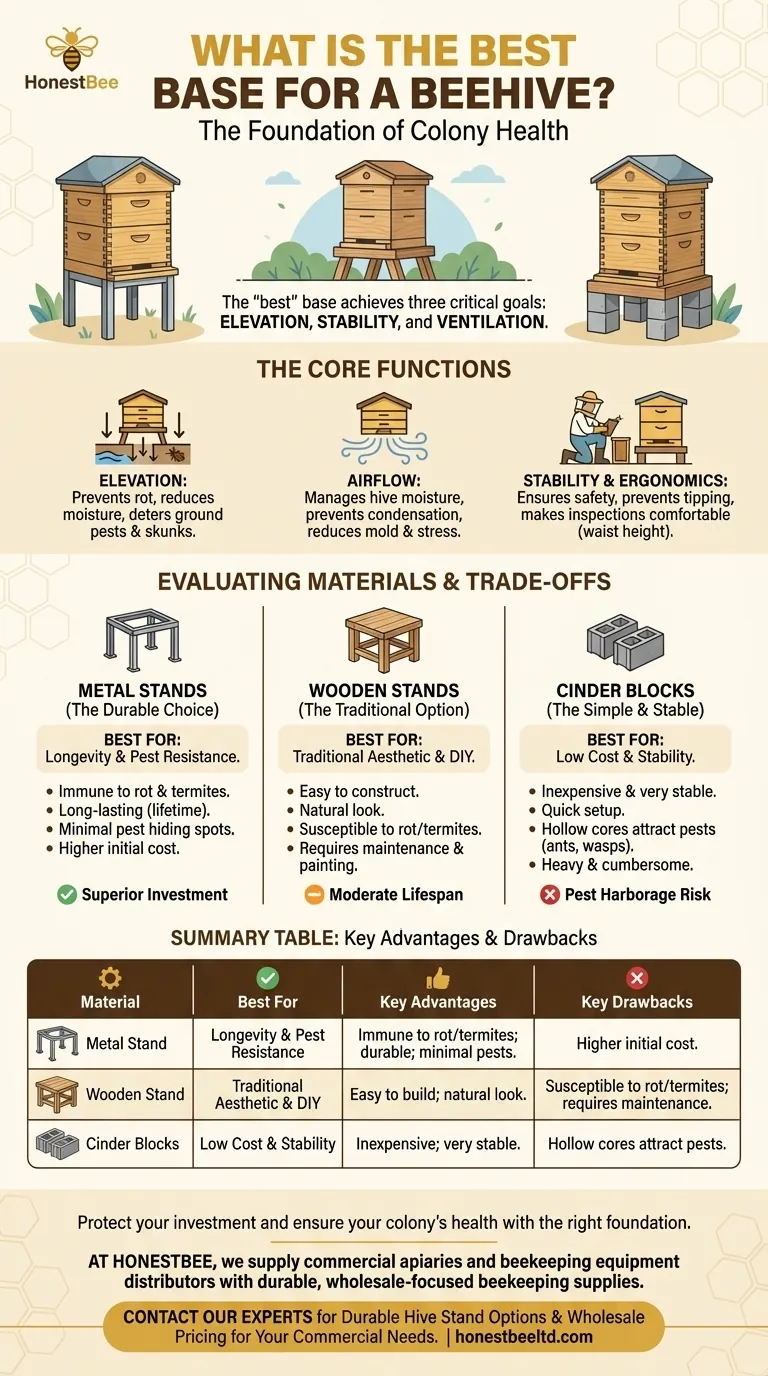
Related Products
- Plastic Bee Hive Stand for Beekeeping
- Metal Hive Feet Bee Hive Stand for Ant Protection
- Metal Bee Hive Stand Bee Box Stand for Beekeeping
- Professional Ant-Proof Beehive Stand with Integrated Moat for Beekeeping
- Wholesales Dadant Size Wooden Bee Hives for Beekeeping
People Also Ask
- What are the advantages of a second hive if the queen is killed? The Ultimate Insurance Policy for Your Apiary
- Why is elevating the hive important? A Simple Step for a Healthier, More Productive Colony
- What are the main differences between Langstroth and Top Bar Hive designs? Choose the Right Hive for Your Beekeeping Goals
- How do bees regulate the temperature of their hive during the summer? Discover Their Natural Cooling System
- How does the longevity of plastic bee hives compare to wooden hives? Discover the Durable Choice



